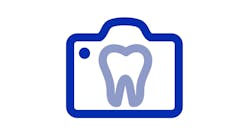Selling a dental practice can be a rewarding yet tedious process. For dentists who also own their associated real estate, getting things right means maximizing the value of both assets while ensuring smooth transaction processes ... but getting things wrong can render the real estate unsalable to professional and well-capitalized real estate investors. It could also hinder the ability to sell when you desire.
In my decades of experience, more than 80% of practice sellers divest the practice's real estate within four years of selling the practice transaction; most of them were not considering that option previously. The greatest influences on an established property's value are the lease and quality of the tenant-specifically, the lease term and structure. With the appropriate planning, practice sellers who own the associated real estate can maximize both assets.
The following considerations are based on the experience of executing hundreds of practice and real estate transactions. This article will highlight a few simple steps and how to avoid common pitfalls.
Nail down and present lease terms early
One of the most critical aspects of selling a dental practice is ensuring all financials are in order before going to market. For sellers who own the associated real estate, presenting a clear, well-defined plan for the lease that will be put in place is just as important.
Take control of the situation. This isn't a negotiation like the practice purchase offer.
Surprises are bad news-especially with items integral to operations such as leases and providers, which can derail the deal or significantly alter its value. Thus, sellers regularly provide summary information on third-party leases upfront in their initial evaluation process. Buyers want to know about potential roadblocks, such as the lease not being transferable or the remaining term. Sellers who own the associated real estate should treat their related property in the same way.
Be transparent and proactive with the expected lease terms and structure from the jump ensures no surprises, a smoother transaction, and prevents costly disruptions later down the line.
The typical sale process is not favorable. It is commonplace for real estate to be one of the last items addressed during due diligence and negotiations. After all, it makes sense for sellers to wait until the deal is almost finalized before notifying the third-party landlord.
If the related party lease is not outlined in detail at the beginning of the introductory process, there is potential for the two parties to have different expectations when left to the end of negotiations, especially when deal fatigue starts to set in. Don't let this happen.
Sellers should outline expectations for lease terms and structure upfront, in detail, in the financial packet. Avoid complications that could jeopardize the deal later on. Due to timelines and deadlines, not doing this can lead to a lease structure that limits real estate flexibility and value.
Have a new lease with at least A 10-year initial term
For practice buyers, securing a long-term lease agreement is crucial to the sustainability of their business investment, particularly in dental practices where location plays a key role in success. Similarly, the lease needs to appeal to real estate owners and investors. Although what is optimal may vary between the two, there is significant overlap that can meet the needs of both parties.
For real estate owners with an operating entity and executed a lease with the practice, draft a new lease. As the owner of both entities, there may be valid reasons for the terms in the lease that should not apply to the new practice owner. Even if the lease copy is going to be identical, the best practice is to start anew with a new term.
While it may seem like a long period, a 10-to-12-year initial lease term strikes a good balance between the practice buyer's desire for security and flexibility with the real estate investor's need for a long-term tenant. It's common for commercial real estate leases to span 10 to 15-or even 20-years. Both DSO investors and real estate investors are looking for long-term stability, and this time frame provides the assurance that the space is available to the practice for the foreseeable future.
For the real estate owner, the current lease term is the only part that is essentially guaranteed aside from tenant bankruptcy. Thus, this is one of the most important factors influencing real estate's attractiveness to investors. The longer lease provides more income assured to the property owner, which makes it more attractive to finance the transaction at a valuation desired by the real estate seller.
Remember that there is often a gap between lease execution and selling real estate. Every year cuts the assured revenue for the buyer, which impacts valuation.
Triple net (NNN) lease is the gold standard
The gold standard lease structure in commercial real estate is the triple net, or NNN. In this structure, the tenant agrees to pay the actual cost for real estate related expenses, including utilities, property taxes, insurance, and maintenance-in addition to the base rent. The triple net format is the most fair and transparent structure for both parties of the lease.
For the tenant, an NNN lease means avoiding additional cost buffers. To account for the unpredictable expense inflation year to year, in a gross lease landlords will include a few percent or more buffer on top of the starting expense. This increases the overall cost of a gross lease for the tenant as compared to a pure triple net structure.
For the landlord, an NNN lease ensures predictable and consistent operations and cash flow. Additionally, a triple net format is sometimes a requirement for many mortgages, as the debt funding is based on the lease's operating income.
The NNN lease is a win-win for both tenants and landlords.
Set a market competitive lease rate
The base lease rate itself is another crucial factor. The rent set for the property must be competitive with the local market for similar spaces in the area. This is essential for the valuation of the property but also for the tenants' future operations. An in-market rental rate indicates to future investors that the lease operating income is sustainable.
Although it may be tempting to have an above market rental rate to increase the real estate's value, buyers see the rate as unsustainable over the long term, hurting their future income. Tenants with rents far above market will at some point ask for or need a reduction either mid-term or at a renewal.
Although a lease rate below market will increase the dental practice's profits, it will negatively impact the real estate value, since the lease's operating income directly impacts property value. Well-capitalized professional real estate investors account for abnormalities in their assessment and subsequent valuation.
A rental rate at the upper end of the fair market range tends to provide the best net outcome in valuations for real estate and practice. A fair market rate provides transparency and peace of mind for all parties involved. It ensures that the practice remains financially sound in the long run, and it also appeals to potential investors who are looking for a solid return on their investment.
Ensure viability and value for future investors
The ultimate goal is to structure the lease in a way that maximizes value and ensures long-term viability of the real estate and practice.
Fortunately, there is significant overlap in what practice and real estate investors look for in a lease, particularly when it comes to operational and financial stability. Presenting practice buyers with a reasonable initial term with extension options, a market competitive rental rate, and a triple net structure increases the likelihood of a smooth transaction and maximizes the value of both the practice and the real estate.








